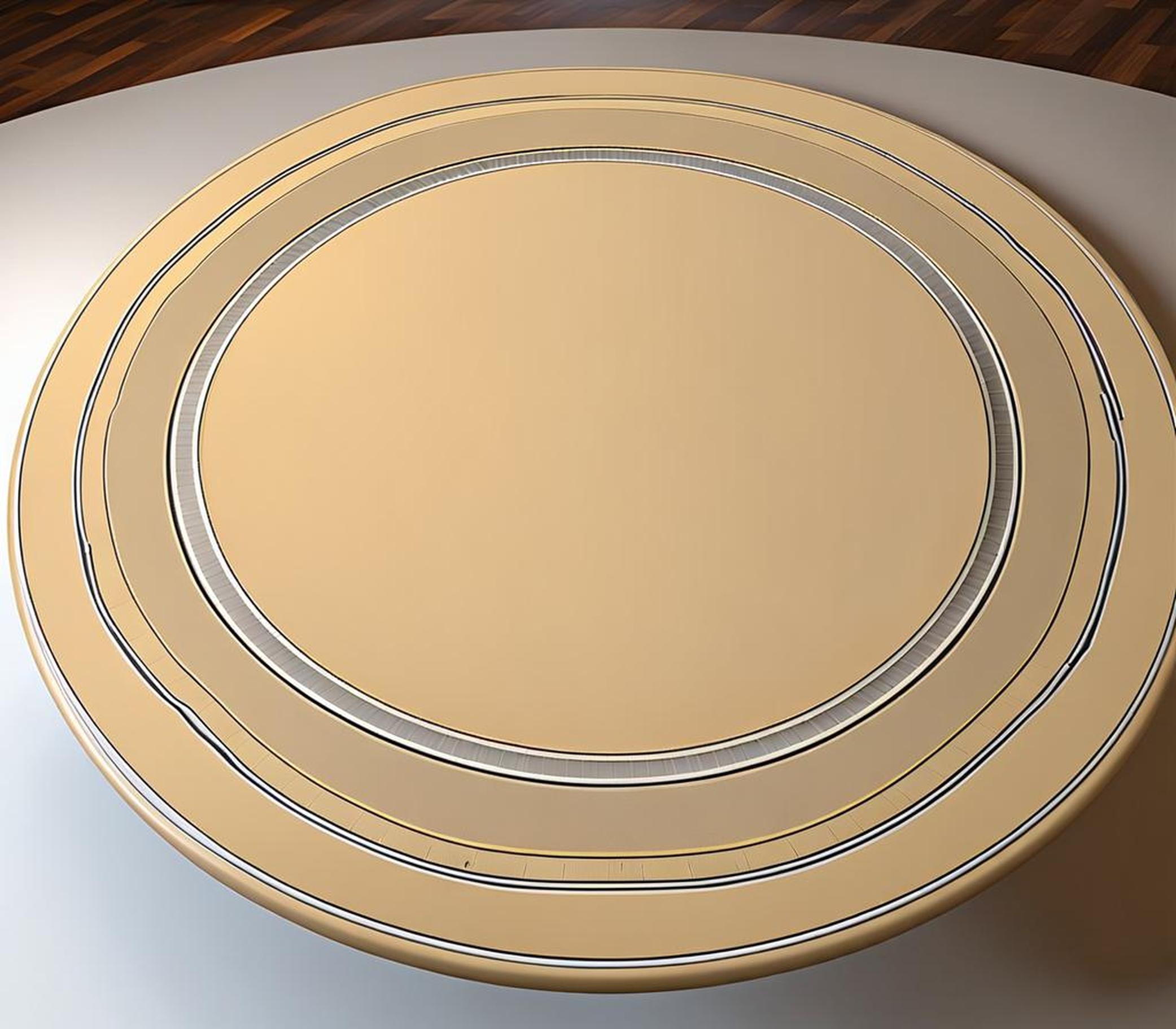Having a perfectly fitted tablecloth can transform an ordinary table into an elegant dining space. But finding the right size round tablecloth requires accurately measuring the diameter and dimensions of your table first.
Don’t worry – with the right tools and technique, measuring round tables is easy. Follow our simple step-by-step guide to measure like a pro every time!
Step 1: Gather Your Measuring Tools
To measure round tables, you’ll need a flexible cloth tape measure. This will conform nicely to the curves of the table. Alternatively, a yardstick or ruler can work by straightening it across the table’s diameter.
Make sure your tool can measure the full diameter in both inches and centimeters. Metric measurements are useful for reference later when buying linens sized in centimeters.
Step 2: Clear and Level the Table Surface
Remove any objects, tablecloths or place settings on or around the table. This gives you a clean surface to work with.

Use table levelers or shims under the legs to ensure the table is perfectly flat and even. An uneven surface can throw off your measurements.
Step 3: Determine the Widest Point
Identify the table’s widest part – this is where you’ll measure the diameter. On perfectly round tables, it’s dead center. But many tables have slight ovals or irregular shapes.
Note down any corners, angles or dimensions that may impact the fit of a round tablecloth. You’ll need to account for these when buying.
Step 4: Measure the Full Diameter
Place your tape measure across the table’s widest point, pulling it taut for an accurate reading. This full width is your diameter measurement.
For oval or irregular tables, take both the widest and narrowest diameters. This gives the range needed when buying an oblong tablecloth.
Step 5: Decide on Desired Drop Length
The drop length determines how far the tablecloth overhangs the table edge. Typical options are:
- 10-15 inches for casual dining
- 15-20 inches for more formal events
- 20-30 inches for very formal or high tables
Add extra length if the table has a thick apron or skirt between the top and floor.
Step 6: Double the Drop Length
Now double your desired drop length – this accounts for the overhang on both sides of the table.
For example, if you want a 15 inch drop, double that to 30 inches. This is the amount you’ll add to the diameter.
Step 7: Add Diameter + Double Drop
Next, simply add the table diameter and doubled drop length together. The total is the minimum tablecloth size needed.
If the number falls between standard sizes, round up for a safer fit. Or allow extra length and width for shifting.
Step 8: Record All Measurements
Note down the following for reference:
- Table diameter
- Desired drop length
- Double drop length
- Total minimum tablecloth size
Record in both inches and centimeters. Take photos of any irregularities too.
Step 9: Buy Slightly Larger than Needed
Tablecloths come in standard sizes, so purchase slightly bigger than your measurements:
- Round up to the next size available
- Add a few extra inches all around
- Rectangular linens work for oval tables
This ensures a perfect drape with ample overhang on all sides – even if the tablecloth shifts a bit.
To recap, avoid these common measuring mistakes:
- Not allowing for table height and aprons
- Measuring diameter incorrectly
- Forgetting to double the drop length
- Skimping on drop size leading to insufficient coverage
You can measure round dining tables with the right tools. Follow our guide for beautifully fitted tablecloths every time!
